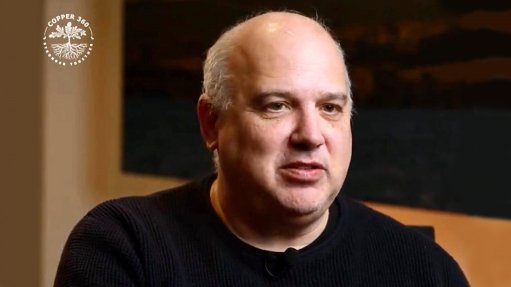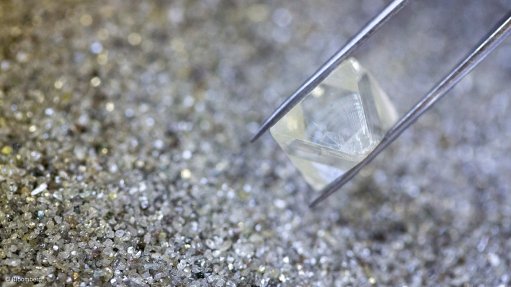Fortescue says it has no rail capacity for Brockman
JOHANNESBURG (miningweekly.com) – Fortescue Metals is challenging smaller rival Sydney- and Hong Kong-listed Brockman Australia’s move to gain access to part of subsidiary The Pilbara Infrastructure’s (TPI’s) private railway line.
In a submission to the Economic Regulation Authority (ERA) on Friday, ASX-listed Fortescue said that there was no surplus capacity on TPI’s rail infrastructure to accommodate Brockman’s proposed movement of 20-million tonnes a year of iron-ore.
Brockman’s proposal, which was submitted to the ERA in May, would lead to the “displacement” of Fortescue tonnes, went against contracts already in place with partners such as BC Iron and would result in an “inefficient use of and investment in” railway infrastructure.
The addition of 20-million tonnes a year on the railway lines would also not increase competition in the highly fragmented industry, Fortescue determined.
Brockman is seeking access to Fortescue’s railway from around the 219 km point on the TPI main line, from which it would construct a rail spur to its Marillana project, and to the 23 km point on the TPI main line, near Port Hedland, from which it would build a rail spur to the proposed North West Infrastructure (NWI) port facilities.
Without access to the Fortescue railway, miners including Brockman, Atlas Iron and Flinders Mines may have to build their own infrastructure, a costly undertaking that would require raising billions of dollars.
However, Fortescue said that it was using the full capacity of its line and that it would use all the future capacity created by its own-funded expansions. It also stated that Brockman did not propose any extension or expansion to TPI’s railway in order to accommodate the smaller miner’s proposed trains.
Fortescue said that opening up the lines would hamper its own production and rail targets, resulting in less incentive to invest in future maintenance and expanding of a system that it would not reap the full benefits from.
The iron-ore miner is forecasting production of 133-million tonnes of ore for the 2014 financial year, with a budgeted run-rate of 155-million tonnes by December.
The group had designed, constructed and exclusively funded TPI’s entire railway system, including the current expansion to 155-million tonnes a year – due for completion in the second quarter of 2014 – to exploit its Joint Ore Reserves Committee-complaint resource of 15.6-billion tonnes and reserves in excess of 2.2-billion tonnes.
The company warned that, should Brockman-operated trains be allowed access to its line, its own production would fall, which would lead to Pilbara job losses, lower payments to native title holders and lower federal tax and royalty contributions by Fortescue.
Further, future expansions and investments would be delayed owing to required negotiations; the extension of Fortescue internal decision-making processes owing to the need for assurances of seamless negotiations, and possible third-party financing requirements for Brockman.
“… Brockman does not have an economically viable project that can underwrite all necessary components of the project, including construction of a port terminal, construction of a rail spur, acquisition of sufficient rolling stock, mine development and access charges,” said Fortescue in the six-page submission to the ERA, adding that as a result, significant time and expense would be unnecessarily incurred by TPI, Fortescue, Brockman and the regulator.
Brockman is currently developing its flagship Pilbara-based Marillana iron-ore project, which hosted 173-million tonnes of measured mineral resources, 1 238-million tonnes of indicated mineral resources and 219-million tonnes of inferred mineral resources.
Brockman previously reported that detailed feasibility studies had indicated that Marillana would produce 419-million tonnes of final product, with sustained output of 17-million to 20-million tonnes a year.
The company’s Ophthalmia iron-ore project, which comprised three granted exploration licences near Newman, 80 km from Marillana, supported Brockman, Aurizon and Atlas' ongoing feasibility studies for an independent East Pilbara railway.
Brockman could either extend the proposed railway to Ophthalmia or truck material from Ophthalmia to Marillana, increasing tonnages on the proposed independent railway, enhancing its viability.
Together with Aurizon and Atlas Iron, Brockman is studying the development of a heavy haulage railway in the East Pilbara to connect certain iron-ore mines to the new port facility and had tasked Aurizon with the development and operation of the port and rail infrastructure required for its projects.
Brockman, through its joint venture interests in NWI, has joint rights to codevelop a 50-million-tonne-a-year port facility at Port Hedland, which, when constructed, would include unloading, stockpiling and ship loading infrastructure.
Comments
Press Office
Announcements
What's On
Subscribe to improve your user experience...
Option 1 (equivalent of R125 a month):
Receive a weekly copy of Creamer Media's Engineering News & Mining Weekly magazine
(print copy for those in South Africa and e-magazine for those outside of South Africa)
Receive daily email newsletters
Access to full search results
Access archive of magazine back copies
Access to Projects in Progress
Access to ONE Research Report of your choice in PDF format
Option 2 (equivalent of R375 a month):
All benefits from Option 1
PLUS
Access to Creamer Media's Research Channel Africa for ALL Research Reports, in PDF format, on various industrial and mining sectors
including Electricity; Water; Energy Transition; Hydrogen; Roads, Rail and Ports; Coal; Gold; Platinum; Battery Metals; etc.
Already a subscriber?
Forgotten your password?
Receive weekly copy of Creamer Media's Engineering News & Mining Weekly magazine (print copy for those in South Africa and e-magazine for those outside of South Africa)
➕
Recieve daily email newsletters
➕
Access to full search results
➕
Access archive of magazine back copies
➕
Access to Projects in Progress
➕
Access to ONE Research Report of your choice in PDF format
RESEARCH CHANNEL AFRICA
R4500 (equivalent of R375 a month)
SUBSCRIBEAll benefits from Option 1
➕
Access to Creamer Media's Research Channel Africa for ALL Research Reports on various industrial and mining sectors, in PDF format, including on:
Electricity
➕
Water
➕
Energy Transition
➕
Hydrogen
➕
Roads, Rail and Ports
➕
Coal
➕
Gold
➕
Platinum
➕
Battery Metals
➕
etc.
Receive all benefits from Option 1 or Option 2 delivered to numerous people at your company
➕
Multiple User names and Passwords for simultaneous log-ins
➕
Intranet integration access to all in your organisation


















